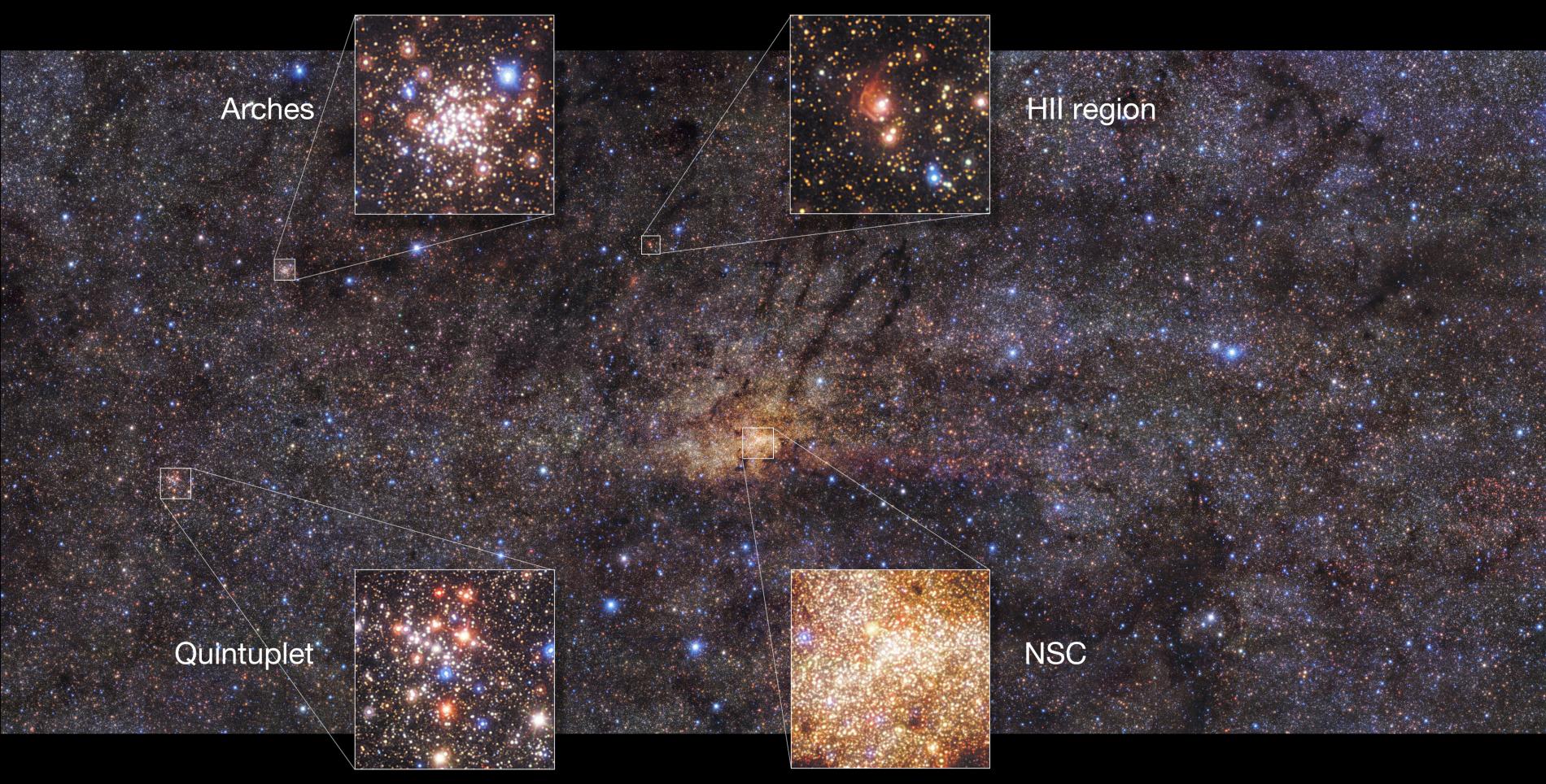IAA researchers discover an extremely violent episode in the history of the Milky Way, with over a hundred thousand supernova explosions
A survey with an unprecedented resolution of the central regions of our galaxy reveals its full history of star formation, which presents steep ups and downs in star formation. There are indications of a burst of star formation so intense that it caused more than one hundred thousand supernova explosions
The GALACTICNUCLEUS project, coordinated by researchers from the Institute of Astrophysics of Andalusia (IAA-CSIC), was designed to study the central region of the Milky Way, which represents the most extreme astronomical environment we can study in detail, with a supermassive black hole surrounded of a dense star cluster. With a sample of stars one hundred times higher than previous projects, GALACTICNUCLEUS has allowed to unravel the history of star formation in the galactic center and detect what was possibly its most energetic episode: a burst of star formation that produced more than one hundred thousand supernova explosions.
"For the first time we have obtained a detailed vision of the process of star formation in a large region of the galactic center", says Rainer Schödel, an astronomer at the IAA-CSIC and coordinator of the GALACTICNUCLEUS project. "Contrary to what was expected, we have discovered that the formation of stars has not been continuous", says Francisco Nogueras-Lara, a researcher at the IAA-CSIC and first author of the study, published in Nature Astronomy.

The study reveals that about 80% of the stars in the center of the Milky Way were formed in the remote past, between eight and thirteen billion years ago. This period of initial star formation was followed by some six billion years of latency during which stars were barely born. This sterile period came to an end with an intense burst of star formation about a billion years ago: stars with a combined mass of several tens of millions of suns formed in the galactic center in a period of less than one hundred million years.
ONE OF THE MOST VIOLENT EPISODES IN THE HISTORY OF THE MILKY WAY
“The conditions in the galactic center during this burst of activity should resemble those of starburst galaxies, which show a star formation rate of more than one hundred solar masses per year; this is much higher than the current rate of the Milky Way, which oscillates annually between one and two solar masses”, says Nogueras-Lara, who is now researching at the Max Planck Institute for Astronomy in Heidelberg (Germany).
In this type of starbursts many massive stars are born, which have a short life: they burn their fuel, nuclear hydrogen, much faster than lower mass stars and culminate their lives with violent supernova explosions. "This burst of activity, which resulted in the explosion of more than one hundred thousand supernovae, was probably one of the most energetic events in the entire history of the Milky Way", concludes Rainer Schödel (IAA-CSIC).
This burst was followed by a period of reduced activity, but in the last tens of millions of years the galactic center has been forming stars at a relatively high rate.
This result changes our image of how stars are formed in the central region of the Milky Way: instead of a constant star formation, this part of the galaxy shows notorious peaks of activity throughout its history.
This research was made possible by the observations of the galactic center made with the HAWK-I instrument of the ESO´s Very Large Telescope (VLT) in the Atacama Desert (Chile). This infrared camera, capable of seeing through the dust clouds of the galactic center, made it possible to obtain the most detailed image of the galactic center, published in October. For this, more than three million stars were studied, covering an area corresponding to more than sixty thousand square light years.
Studying the center of the Milky Way is essential to obtain a complete picture of how our galaxy formed. The data obtained within the framework of the GALACTICNUCLEUS project also allow a better understanding of the structure and properties of the galactic center, as well as its stellar populations.
F. Nogueras-Lara, R. Schödel et al. "The nuclear disc of the Milky Way: Early formation, long quiescence, and starburst activity one billion years ago". Nature Astronomy, Dec 2019.
ESO´s press release: https://www.eso.org/public/news/eso1920/
Instituto de Astrofísica de Andalucía (IAA-CSIC)
Unidad de Divulgación y Comunicación
Silbia López de Lacalle - sll[arroba]iaa.es - 958230676
https://www.iaa.csic.es
https://divulgacion.iaa.csic.es

